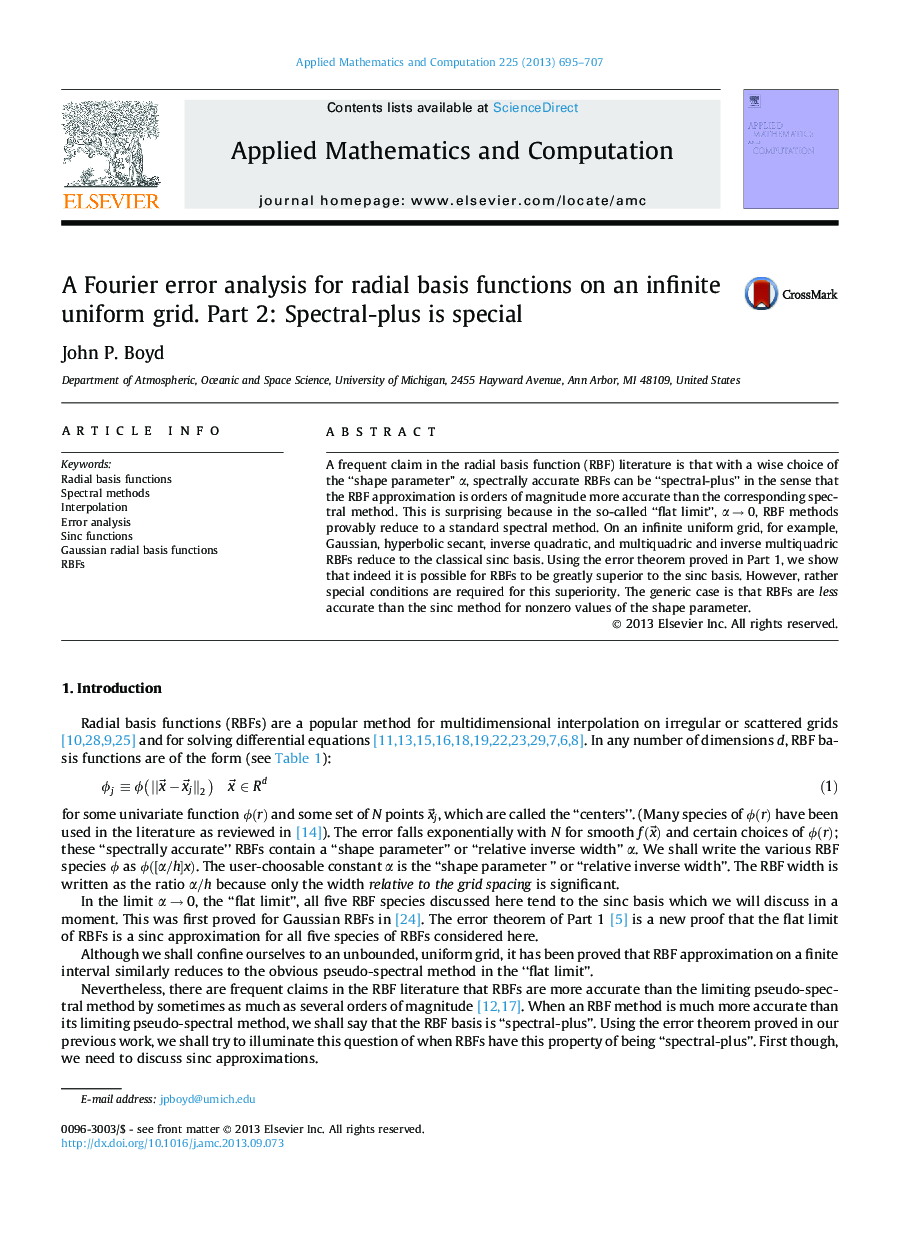| Article ID | Journal | Published Year | Pages | File Type |
|---|---|---|---|---|
| 4628631 | Applied Mathematics and Computation | 2013 | 13 Pages |
•Error analysis for radial basis function (RBF) interpolation.•Analyze claims that RBF is sometimes orders of magnitude more accurate than other spectral methods.•For special cases with careful tuning, confirm RBF is superior to sinc interpolation.•Generically, RBF interpolation is somewhat worse than sinc interpolation.
A frequent claim in the radial basis function (RBF) literature is that with a wise choice of the “shape parameter” αα, spectrally accurate RBFs can be “spectral-plus” in the sense that the RBF approximation is orders of magnitude more accurate than the corresponding spectral method. This is surprising because in the so-called “flat limit”, α→0α→0, RBF methods provably reduce to a standard spectral method. On an infinite uniform grid, for example, Gaussian, hyperbolic secant, inverse quadratic, and multiquadric and inverse multiquadric RBFs reduce to the classical sinc basis. Using the error theorem proved in Part 1, we show that indeed it is possible for RBFs to be greatly superior to the sinc basis. However, rather special conditions are required for this superiority. The generic case is that RBFs are less accurate than the sinc method for nonzero values of the shape parameter.
